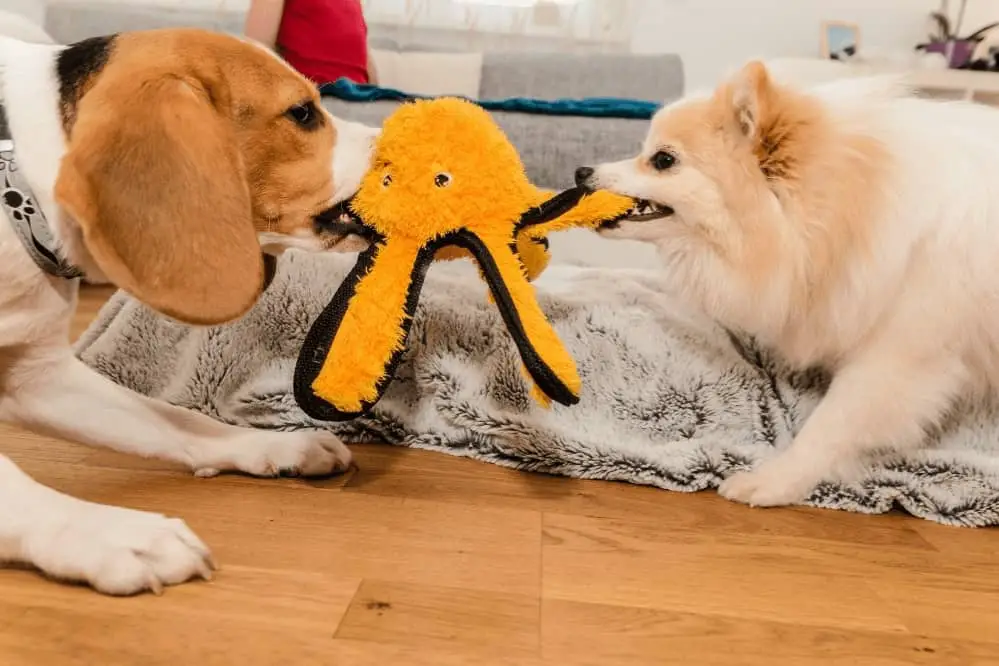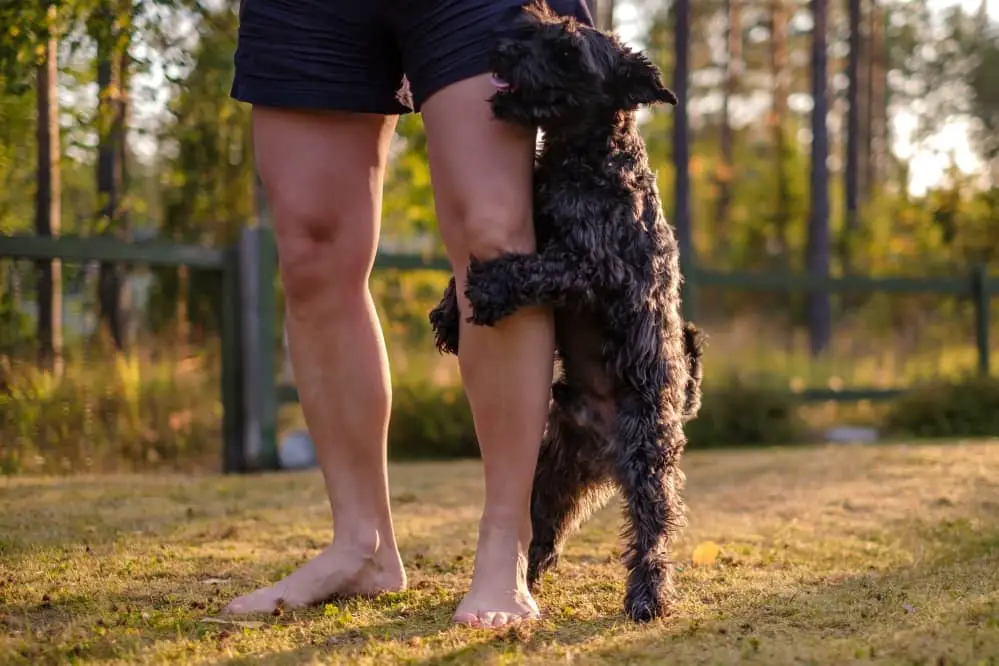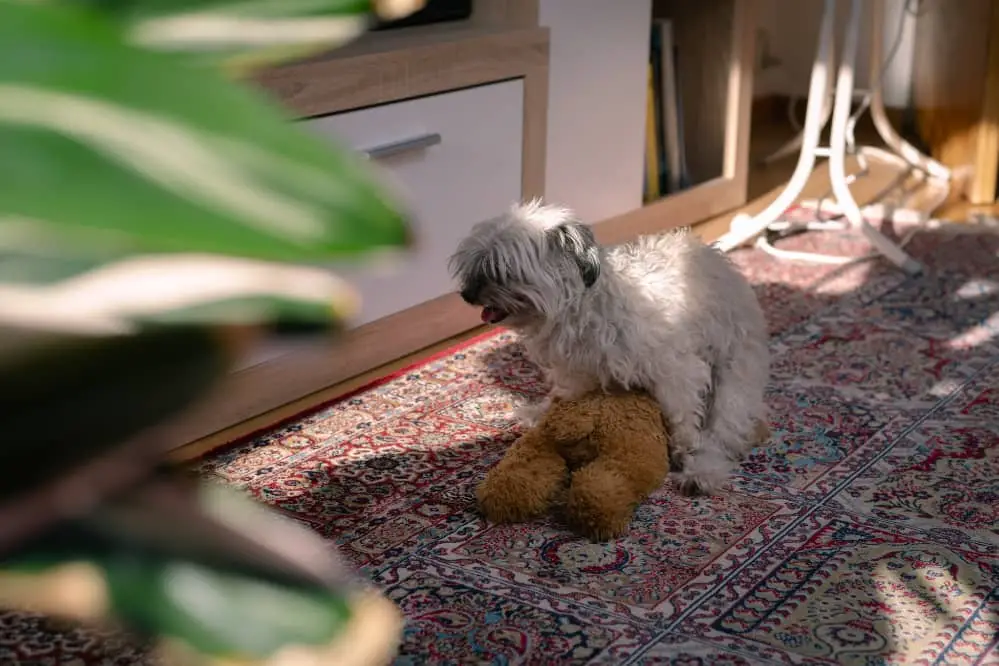Have you ever found your pup humping a certain blanket or object and wondered what in the world is going on? The behavior can be confusing and embarrassing, but it’s actually quite common. Here are seven possible explanations for why dogs hump a certain blanket or object.
Seven Things That Could Lead to Blanket Humping
Let’s dive into seven reasons why your dog is engaged in such behavioral act.
1. Frustration
Dogs humping objects is an act of displacement behavior, a way of expressing frustration without getting scolded. Dogs may hump objects when they’re uncomfortable or agitated, for example, when your presence or words leave them feeling uncertain. In particular, after being reprimanded, dogs may feel uneasy and search for security by humping blankets or soft toys.
It’s also possible that if your pup is seeking attention and its needs are not met, it may express itself by humping fluffy cushions or other items in the house. In either case, it’s best to provide adequate reassurance to let your dog know everything is all right and discourage further object-humping activities.
2. Stress Relief
Even though we associate humping with inappropriate behavior, dogs may actually engage in this activity to cope with stress. Like many humans who turn to activities such as thumb-sucking or hair-twirling during times of distress, a dog’s urge to hump can be soothing and comforting to them.

There is a wide spectrum of behaviors that we do out of instinct, animal or human, and stress relief is likely an instinctual reaction for many.
Related article Warning Signs of Dog Depression
3. Comfort
Puppies are much like small children in the sense that they seek comfort and security during moments of unease. As a result, these innocent fur babies can often develop unusual habits to provide themselves with solace. Through some research on why dogs hump and how they seek comfort, studies have shown that one such habit is blanket humping.

This coping mechanism usually begins around six weeks of age and may continue on into adulthood if not passionately discouraged. Although it may look and sound strange, this behavior pattern is actually quite natural and not necessarily a sign of a medical condition.
Believe it or not, temporary blanket humping may even be healthy for your pup as it gives them an opportunity to express their excitement about something that makes them feel safe and secure.
4. Marking Territory
Many people believe that a pup who humps furniture is just being naughty, but it may actually have a deeper meaning. Dogs naturally rely on their powerful sense of smell to mark their territory and are strongly driven by the instinct to protect it.

When your pup humps an item, such as a chair or a blanket, he could be attempting to leave his scent to claim ownership of that space as his own. In other words, he’s telling other pups not to trespass! This behavior can lead to increased aggression when dogs encounter each other since they all claim different territories.
If you’re worried about this behavior escalating, make sure your pup has plenty of places he can go outside and mark safely while also allowing him some time indoors with items he can call his own.
5. Arousal
Because humping is pleasurable and arousing for dogs, as it is for humans when engaging in sexual activities, it’s not uncommon for your pup to become fixated on objects that provide them with pleasure.

What starts off as an investigation into the texture, shape, and feel of the new object can soon develop into Pavlovian habituation, where he learns that after a period of interaction his level of arousal increases. When this happens, his tendency will be to return to the object in order to maximize the stimulation he receives from it.
In other words, if your dog begins humping one specific item, chances are he found it particularly gratifying compared to any other object around him and has since learned that such behavior produces a desirable outcome.
6. Boredom/Lack of Exercise
If your pup isn’t getting enough exercise, it could result in boredom and restlessness which can lead to some odd behaviors. For example, sometimes dogs will start humping a certain item over and over again out of sheer boredom. To avoid these strange displays, you can make sure your pup is getting the appropriate amount of exercise each day.
Keep your dog active with a daily walk, a game at the park, or even just encouraging your pup to run around the yard for an hour or two, anything that gets those tails wagging and muscles moving! Not only will this keep your dog physically healthy but mentally, too; regular exercise helps keep a dog’s mind sharp and free from boredom-induced behavior.
7. Learned Behavior
It’s an interesting concept to think that our canine companions might learn from each other in ways we would never expect. Dogs can be just like us when it comes to learning, and often the influence of one dog on another can carry through for life.
In this case, puppies may watch their parents or siblings going about their daily activities and as a result of mimicking or imitating them, develop habits and behaviors they had previously not practiced themselves.

For example, if there is another pup around that enjoys humping your puppy’s favorite toy, he may develop the same behavior out of sheer curiosity or perhaps emulation. It’s essential that pet owners recognize these instances in order to intervene sooner rather than later; otherwise, it could quickly become a habit impossible to break.

